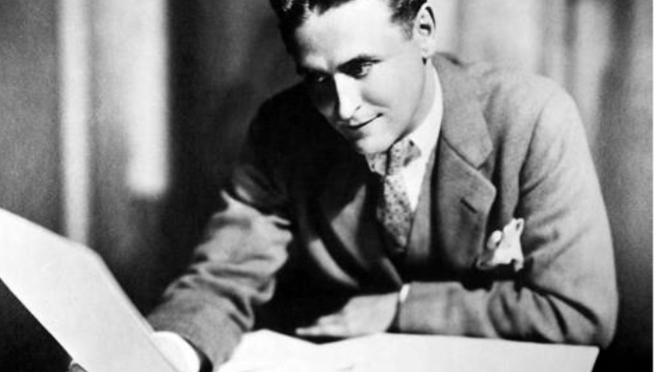F Scott Fitzgerald at 128: Top-5 of his works
F Scott Fitzgerald at 128: Top-5 of his works

F Scott Fitzgerald—the beloved prince of the jazz age—is best known for his novel The Great Gatsby.
Amidst the glitz, glamour and splendour of the dazzling 1920s, it wasn’t just about the freedom and joy in the air, rather the readers experience the downfall of the American dream, too, through Fitzgerald’s writing.
Fitzgerald was born on 24 September, 1896, in Saint Paul, Minnesota, United States. It’s his 128th birthday today. Happy birthday, old sport!
It was in 1921, when he was young and drunk with sudden success, F Scott Fitzgerald told a newspaper reporter that no one should live beyond 30. Certainly, he surpassed his expectations, yet he died young, at 44.
Fortunately, in this short span of time, F Scott Fitzgerald has penned 4 novels and 164 short stories—just enough stuff for you to devour.
Here are 5 of his works you should read right away:

- The Great Gatsby
F Scott Fitzgerald’s The Great Gatsby is a gorgeous novel set in the roaring 1920s. After reading it, I was left with a mixed feeling: should I feel happy for reading such a thoughtful text or get sad for the ending?
The story revolves around Jay Gatsby, a wealthy man who throws lavish parties in his grand house. The reason? He just wants to rekindle a past love with Daisy, a relative of his new friend Nick.
The novel explores themes of love, hope, and sacrifice, offering sharp contrasts between appearances and reality.
Gatsby, despite his wealth, is portrayed as deeply emotional and selfless, challenging perceptions of the wealthy.
Perhaps Fitzgerald himself is the best person to describe what The Great Gatsby really is. In a letter to a friend, he said: “That’s the whole burden of the novel – the loss of those illusions that give such colour to the world that you don’t care whether things are true or false so long as they partake of the magical glory.”
- The Side of Paradise
This Side of Paradise, F Scott Fitzgerald’s debut novel, discovers the lives and moral struggles of post–World War I youth.
While different from his later works, it similarly explores themes of greed and class. The protagonist, Amory Blaine, is partly based on Fitzgerald himself which makes the novel semi-autobiographical.
The other characters also reflect people from his own life—Isabelle Borgé draws from Fitzgerald’s first love, Ginevra King, and Rosalind Connage is inspired by Zelda Sayre, his future wife.
Fitzgerald skilfully blends fictional narrative with free verse, drama, letters, and poems. He even incorporates stream-of-consciousness passages and shifts between third- and second-person perspectives.
Despite this mix, the book is beautifully cohesive that offers an intimate and authentic reading experience.
- Tender is the Night
Tender is the Night, the book that caused F Scott Fitzgerald the most artistic heartache, was neither a critical nor a commercial success when it was first published in 1934.
But its reputation has, rightly, grown suffused as it is with both the glamour and poignancy of Fitzgerald’s own life: in particular, the failure of his marriage to the lovely, unbalanced Zelda and his acute sense of himself as a great and a ruined artist.
Tender tells the story of Dick Diver, a talented, charming young psychiatrist who marries fragile heiress, Nicole Warren, one of his patients in a Swiss sanitorium, and the slow unravelling of their relationship and Dick’s career.
The beauty of Tender lies as much in its parts as its whole. With a mere exchange of words or a handful of descriptive phrases, Fitzgerald masterfully captures the joyful, tumultuous, and precarious dynamics of a circle of friends, or the instant when a once-cherished bond is irrevocably shattered.
- The Beautiful and Damned
The Beautiful and Damned, F Scott Fitzgerald’s second novel, unfolds the tale of Anthony Patch, a socialite of the 1920s and the presumed heir to a tycoon’s vast fortune.
Anthony and his wife Gloria portray youth and beauty, wealth and leisure, devoting their existence to the unbridled chase of joy.
Yet, this deeply personal tale takes a sorrowful turn, as their union crumbles beneath the burden of their aspirations, indulgence, envy, and lack of direction.
Fitzgerald masterfully depicts the east-coast elite as the Jazz Age begins to rise, drawing in all social strata into what will soon be recognised as Cafe Society. True to the hallmark of Fitzgerald’s works, this novel presents a masterful exploration of character, all rendered in breathtaking prose.
- The Short Stories of F Scott Fitzgerald
While today Fitzgerald is best known for his novels, during his lifetime, his reputation rested largely on his prolific short stories. Matthew J. Bruccoli, a Fitzgerald scholar, compiled a collection of 43 of his best stories, including such classics as The Rich Boy, May Day, and The Diamond as Big as the Ritz.
These stories span the breadth of Fitzgerald’s career and demonstrate his remarkable talent for capturing the nuances of American life, love, and disillusionment in the early 20th century.
Happy reading!


